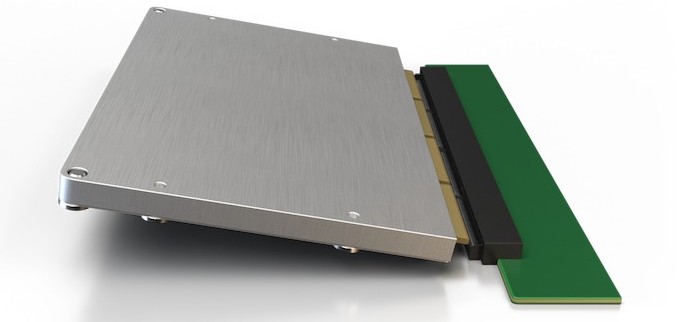Intel NUC: 2019 models and plans for 2020

This year we have not written anything about the Intel NUC micro-PC - but this does not mean that there is absolutely no news on this front. Over the past months, 2019 several new models have been released, the names in the entire line have been changed, and even a fundamentally new NUC class has been announced, however, someone suspiciously resembling ... well, that’s enough for a review post. Let's do this and do it.
Let's start with the first topic - titles. As you probably know, each Intel NUC has its own model index, for example, NUC8i7BEKQA. Each character in it has a certain meaning, but from the consumer’s point of view, it all looks like a cipher. In order not to scare people with cryptography, since the end of last year, Intel's micro PCs have been divided into rulers by scope (although the full names have also remained):
- Enthusiast
- Home,
- Business,
- Mainstream-G.
In this qualification only, as I think, the last class is incomprehensible. It was introduced just a month ago and includes models with discrete graphics Radeon.
')
A total of 6 Intel NUC models from the Enthusiast, Home and Mainstream-G categories based on Intel’s Core i3 / i5 / i7 eighth generation processors were released this year. In addition to the processor, they differ from each other by the maximum number of drives, the presence or absence of the Intel Optane Memory module, pre-installed drives. Details in the tables below.
| Index | NUC8i7BEKQA | NUC8i7BEHGA | NUC8i3BEHFA |
| Class | Enthusiast | Enthusiast | Home |
| Number of drives | one | 2 | 2 |
| CPU | Intel Core i7-8559U | Intel Core i7-8559U | Intel Core i3-8109U |
| Tdp | 28 W | 28 W | 28 W |
| Mounted drive | Intel 760p NVMe SSD 512GB | 32 GB Intel Optane Memory, 2 TB HDD | 16 GB Intel Optane Memory, 1 TB HDD |
| Installed memory | 2x8 GB DDR4-2400 | 32 GB Intel Optane Memory + 1x 8 GB DDR4-2400 | 16 GB Intel Optane Memory + 1x 4 GB DDR4-2400 |
| Max. memory | 32 GB | 32 GB | 32 GB |
| Built-in graphics | Intel Iris Plus Graphics 655 | Intel Iris Plus Graphics 655 | Intel Iris Plus Graphics 655 |
| Discrete graphics | - | - | - |
| Interfaces | Thunderbolt 3 (40 Gbps), USB 3.1 Gen 2 (10 Gbps), DP 1.2 via USB-C | ||
| Wireless interfaces | Intel Wireless-AC 9560 + Bluetooth 5.0 | ||
| Cost of | $ 1181 | $ 1034 | $ 630 |
| Index | NUC8i5BEHFA | NUC8i5INH | NUC8i7INH |
| Class | Home | Mainstream-G | Mainstream-G |
| Number of drives | 2 | 2 | 2 |
| CPU | Intel Core i5-8259U | Intel Core i5-8265U | Intel Core i7-8565U |
| Tdp | 28 W | 15 W | 15 W |
| Mounted drive | 16 GB Intel Optane Memory, 1 TB HDD | 1TB HDD or 256 GB M.2 SSD | 16 GB Intel Optane Memory + 1TB 2.5 "HDD or 128 GB SSD + 1 TB 2.5" HDD or 256 GB M.2 SSD |
| Installed memory | 16 GB Intel Optane Memory + 1x 4 GB DDR4-2400 | 8 GB DDR4-2133 + 16 GB Intel Optane Memory (optional) | 8 GB DDR4-2133 + 16 GB Intel Optane Memory (optional) |
| Max. memory | 32 GB | 8 GB | 8 GB |
| Built-in graphics | Intel Iris Plus Graphics 655 | Intel UHD Graphics 620 | Intel UHD Graphics 620 |
| Discrete graphics | - | Radeon 540X | Radeon 540X |
| Interfaces | Thunderbolt 3 (40 Gbps), USB 3.1 Gen 2 (10 Gbps), DP 1.2 via USB-C | ||
| Wireless interfaces | Intel Wireless-AC 9560 + Bluetooth 5.0 | ||
| Cost of | $ 750 | $ 663 | $ 770 |

And now about the fundamentally new Intel NUC, which was recently presented at the Computex conference - it is called the NUC Compute Element. Perhaps the name will seem familiar to you. Yes, indeed, this is another reincarnation of the long-suffering Intel Compute Module , previously the Compute Card . The company continues to experiment with compact computing modules, the difference of the current version is in simplicity. Intel decided to abandon a full-fledged embedded computer à la "just add a docking station with connectors." This solution was universal, but at the same time expensive and limited in performance. The NUC Compute Element is nothing more than a processor module with cooling and memory that OEM manufacturers can tie up with the functionality they need.
It is assumed that products with the NUC Compute Element inside - in particular, laptops for educational needs - will appear in early 2020.
Source: https://habr.com/ru/post/456530/
All Articles